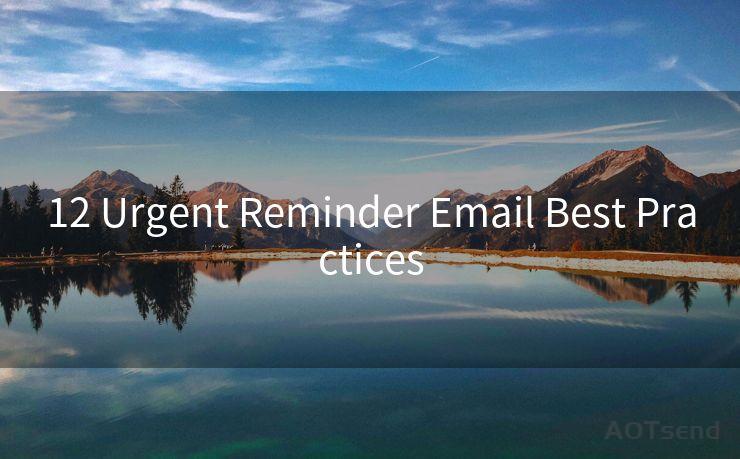12 Urgent Reminder Email Best Practices




In the fast-paced world of business communication, urgent reminder emails play a crucial role in ensuring timely responses and action. To craft such emails effectively, it's essential to follow best practices that grab the recipient's attention while maintaining professionalism and clarity. Here are twelve best practices for writing urgent reminder emails that get results.
1. Clear and Concise Subject Line
Start with a subject line that clearly conveys the urgency and purpose of your email. Use words like "Urgent Reminder" or "Action Required" to pique the recipient's interest.
2. Personalize the Greeting
Always use the recipient's name in the greeting to establish a personal connection and grab their attention. A generic greeting may cause your email to be ignored.
🔔🔔🔔
【AOTsend Email API】:AOTsend is a Managed Email Service for sending transactional emails. Support Email Types: reminders, authentication, confirmations, notifications, verification codes, invoices, password resets, account activations, billing statements, two-factor authentication (2FA), and one-time passwords (OTP) emails, etc. $0.28 per 1000 Emails. 99% Delivery, 98% Inbox Rate.
You might be interested in:
Why did we start the AOTsend project, Brand Story?
What is a Managed Email API, How it Works?
Best 25+ Email Marketing Platforms (Authority,Keywords&Traffic Comparison)
Best 24+ Email Marketing Service (Price, Pros&Cons Comparison)
Email APIs vs SMTP: How they Works, Any Difference?
3. State the Purpose Immediately
Don't waste time with pleasantries or long introductions. Get to the point quickly, stating the reason for the reminder and the action required.
4. Use Direct and Active Language
Be assertive and use active verbs to communicate the needed action. For example, "Please confirm your attendance by [date]" is more effective than "I was wondering if you could maybe confirm your attendance."
5. Provide Clear Deadlines
Include a specific date and time for the required action to create a sense of urgency. This helps the recipient understand the importance of responding promptly.
6. Include Relevant Details
Provide all the necessary information the recipient needs to take action, such as links, attachments, or specific instructions.
7. Keep It Short and Sweet
Avoid long, drawn-out emails. Get to the point, deliver your message, and end it. Brevity is key in urgent communications.
8. Use Bullet Points or Lists
If you have multiple points to convey, use bullet points or numbered lists to make your email easier to read and digest.
9. Maintain a Professional Tone
Even though it's an urgent reminder, maintain a professional and polite tone. Avoid sounding demanding or rude.
10. Proofread and Edit
Always proofread your email for grammar and spelling errors. A poorly written email can damage your credibility.
11. Follow Up Appropriately
If you don't receive a response by the deadline, send a follow-up email, but avoid being too pushy or aggressive.
12. Test and Optimize
Regularly review and analyze the effectiveness of your reminder emails. Make adjustments based on feedback and results to optimize your communication strategy.

By following these twelve best practices, you can craft urgent reminder emails that are effective, professional, and get the desired response. Remember, the key is to balance urgency with clarity and politeness to ensure your message is received and acted upon promptly.




Scan the QR code to access on your mobile device.
Copyright notice: This article is published by AotSend. Reproduction requires attribution.
Article Link:https://www.mailwot.com/p528.html



